Setting healthy intentions (or resolutions) for the New Year always seems like a great idea at the beginning of the year, but can be REALLY challenging to see through, especially for those of us who have created less-than-healthy habits over the years.
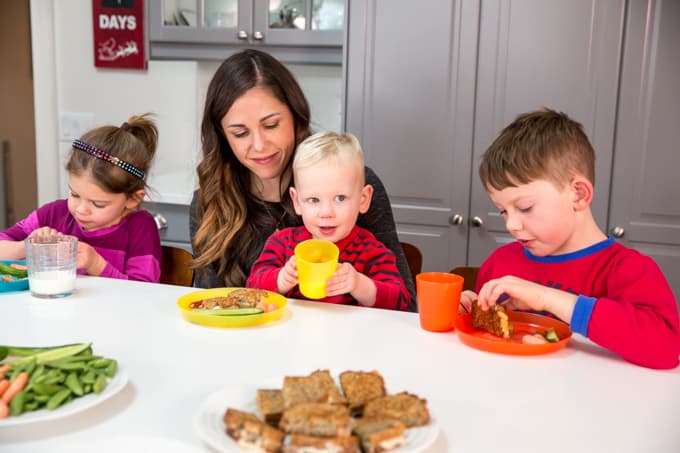
Habits are actions that we take without even thinking about it—things like grabbing a cookie from the cookie jar as we pass through the kitchen, or munching on snacks when we watch TV after dinner. And when it comes to our babies, toddlers and kids, habits – good or bad—are just as easily formed. And we as parents have the power to help them create long-term healthy habits, right from day one.
The key to being able to follow through on a goal or resolution, especially as a busy parent, is to make it realistic and achievable. And involve the whole family—even the baby!
Here are 10 healthy (and realistic) resolutions that will benefit your children as much (if not more) as you:
1. Have one family meal a day:
Family meals give you and your kids a chance to connect and catch up. In fact, I often suggest that parents take the focus away from the food and focus instead on family time. The nutritional benefits will come! Research shows that families that eat together eat more fruits and veggies, less fried foods and sugary drinks and younger children who eat with their family tend to be at a healthy weight.
Right from when your baby starts solids (or even a little before), seat them at the table with the rest of the family so that they can be a part of family meal time, interact with family members, and start to get a sense of what family meals are all about! Even if it’s only once a day, eat together as a family (any meal works!).
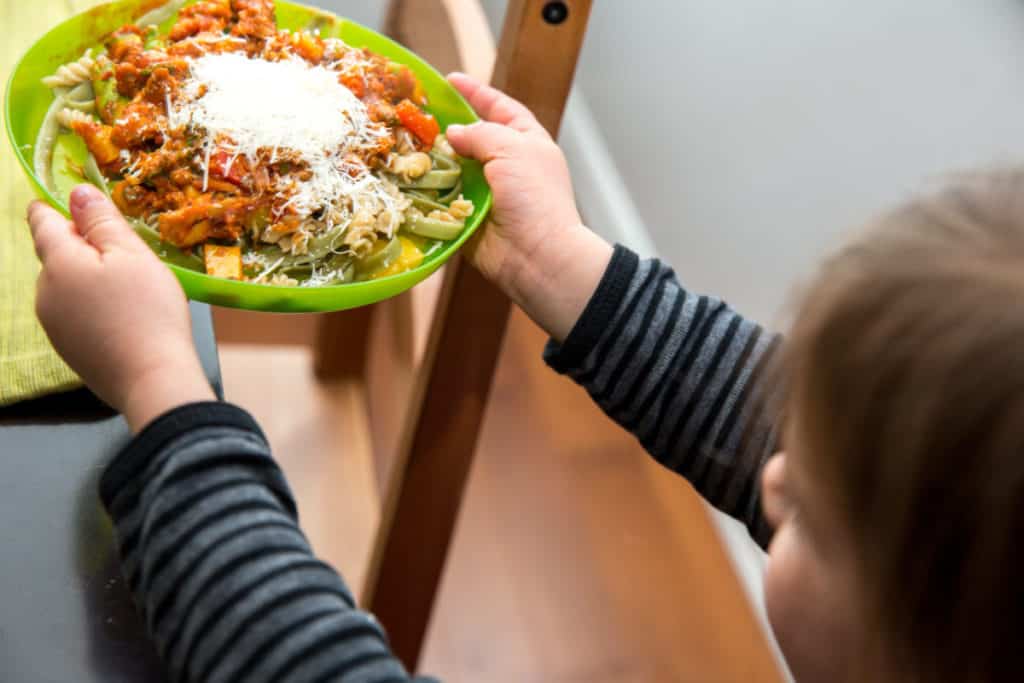
2. Talk about your body the way you want your children to view their own:
Even from the youngest age, kids absorb the language that we use and eventually it becomes their inner dialogue. If you’re always making negative comments about our body, whether it’s when you’re standing in front of the mirror, at the dinner table or when you’re speaking to your partner, your kids will begin to think that this is normal and it will make it harder for them to grow a positive body image, or think and speak positively about their own bodies. Be kind to yourself and notice your strengths—“My arms are really strong, which helps me to swing you around” or “I can jump really high because my legs are so strong”—and encourage your kids to do the same!
3. Involve your kids in meal prep, even if it gets a bit messy:
If your toddler or child has a hand in creating a meal, they will not only feel a sense of pride and achievement, but they are also more likely to eat it. Here’s how to involve your kids in meal prep at every age.
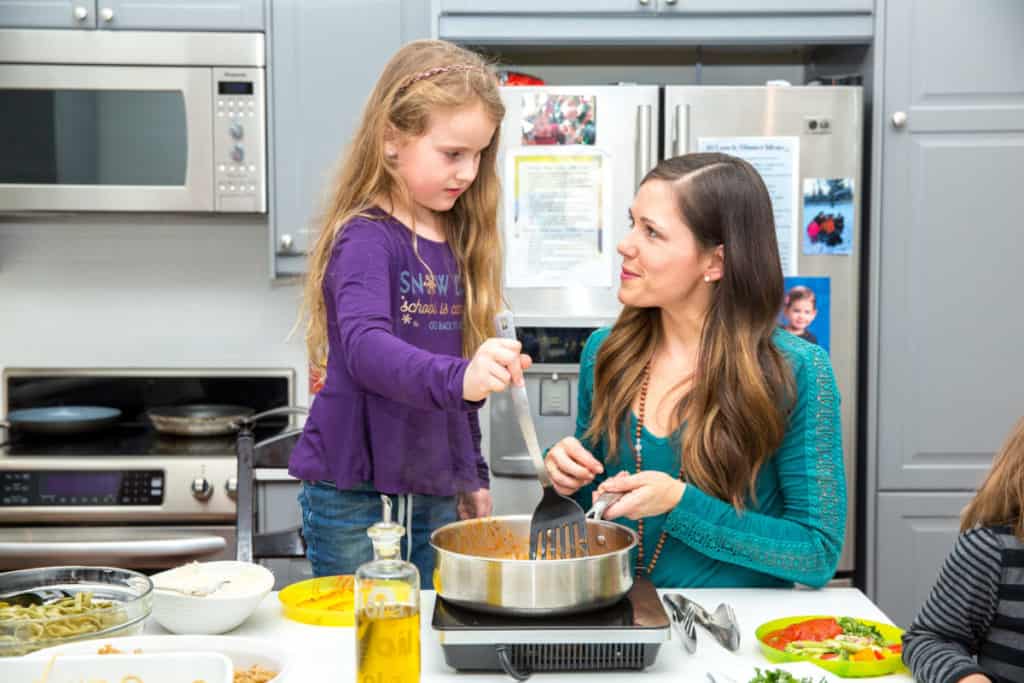
4. Choose whole grains over refined grains:
Carbs are back and in style, and the focus is on whole, unrefined grains—things like quinoa, barley, brown rice and oats, which offer so many nutrients such as fibre, vitamins, minerals and antioxidants.
5. Eat at your table and cuddle on the couch:
Make it a rule that mealtimes and snack times (for the most part) happen at the table, without distractions. If eating happens elsewhere (like the couch in front of the TV), distractions take over and mindful eating gets thrown out the window. You and your kids should be focusing on your food, listening to your body, enjoying family time and connecting. Not scarfing dinner down while watching cartoons.
6. Menu plan – even if it’s only suppers:
Forget about planning out the entire week of meals and snacks – it’s too overwhelming and it’s a lot of pressure to try to stick to. Breakfasts tend to be simpler and more repetitive (in our house it’s usually oatmeal, eggs or smoothies), and lunches tend to be easy–leftovers from dinner, or easy options like sandwiches, wraps or “finger food lunches”. Instead, focus on dinners only, because they’re generally the more time-consuming and labor intensive of the meals. And they can usually spill over to future meals, whether it’s the next day’s lunch, or repurposed into a different supper the next night. Once you’ve mastered suppers, you can venture into other meals if you’d like. Or not!
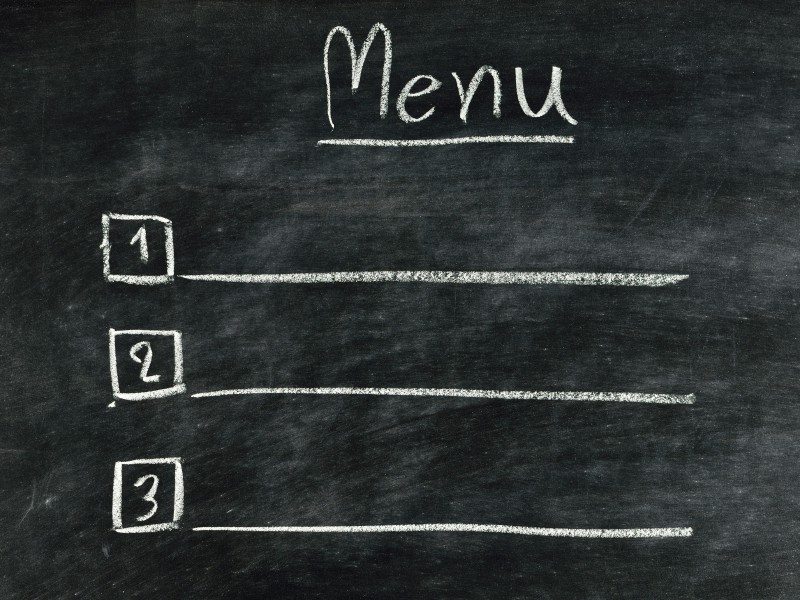
7. Don’t eat right from packages or boxes:
When you grab the chip bag, box of crackers, bag of trail mix or box of cereal, it’s almost impossible to know how much you’re eating, and just as impossible to stop. Before you know it, the bag or box is empty. Instead, portion out snacks for yourself and your kids, serve them on a plate or in a bowl and sit and mindfully eat it. This helps with portion control, and forces you to really decide whether you need another helping.
8. Have a kitchen dance party once a day:
We do this almost every night before bedtime. It tuckers the kids out before bed, gives everyone an extra bit of exercise, and makes for some hilarious moments.
9. Aim for one fruit or vegetable at each meal and snack:
Each meal and snack should contain at least one fruit or vegetable (and throughout the day, there should be a variety, so that you and your kids can reap the benefits of each). Get your kids involved in choosing between two or three fruits or veggies (I call this “structured choice”).
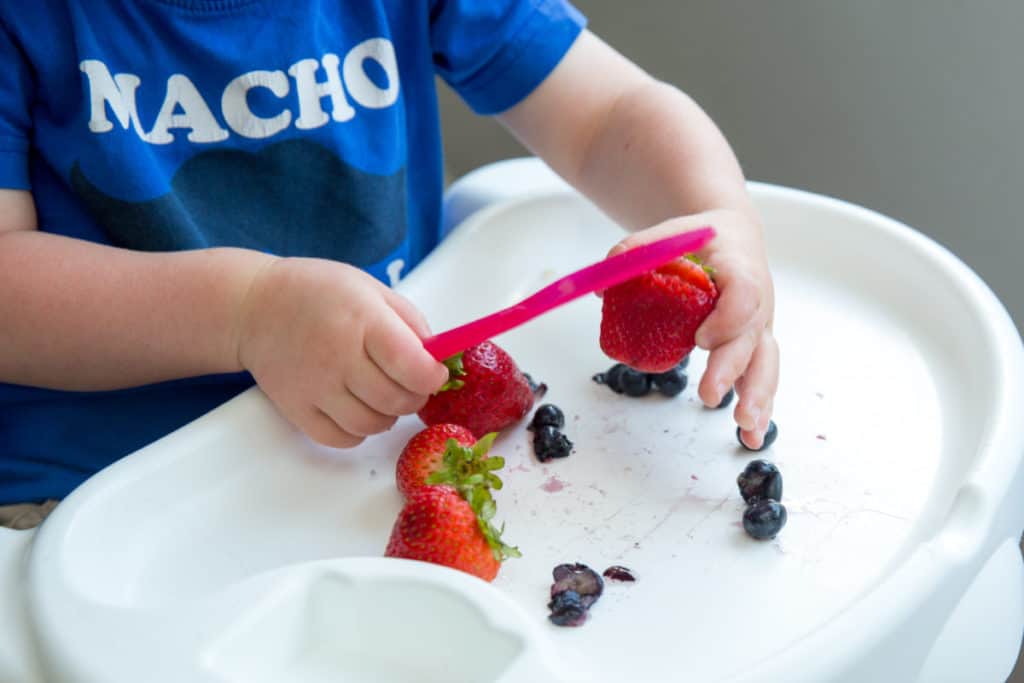
10. Eat until your “tummy is full”, not until your plate is clean:
Listen to your internal hunger cues first and foremost and ignore external hunger cues that can lead you to overeat, and teach your kids to do the same! Instead of getting them to “eat three more bites”, ask them to listen to their tummy to help them know when they should stop eating. Describe how it might feel when you’re “just right” vs. over-full or not full enough. If you suspect that your child isn’t eating enough, explain that the kitchen will be closed after mealtime (so, no more food will be offered for a few hours). On the other hand, if your child tends to overeat, reassure them that the most important thing is to listen to their tummy, and that you can always have more of that food later, at a future meal or snack.
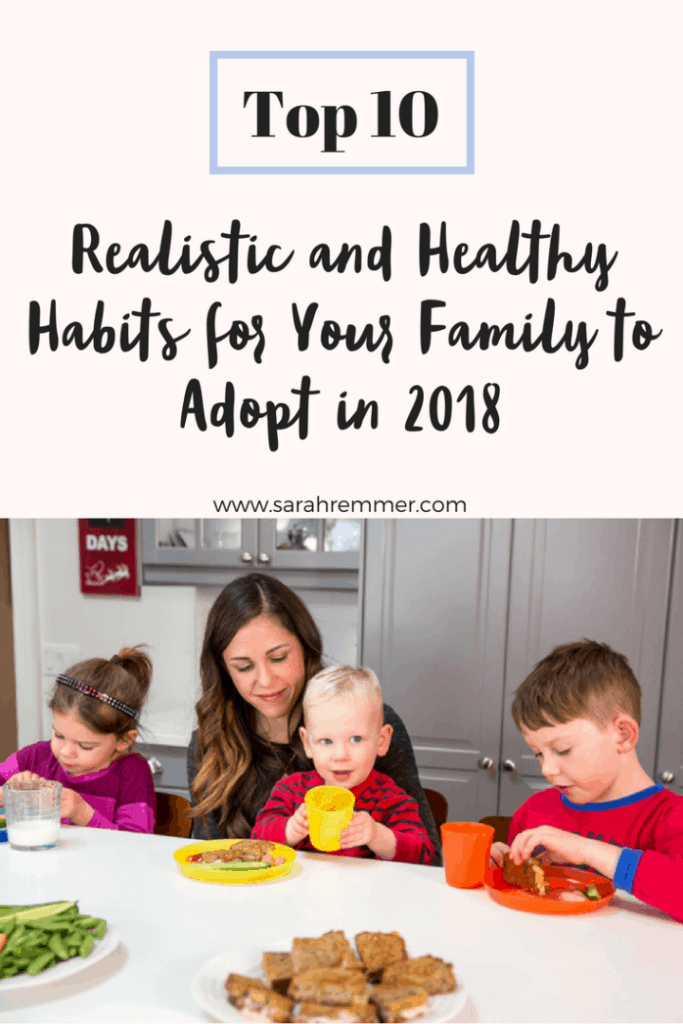
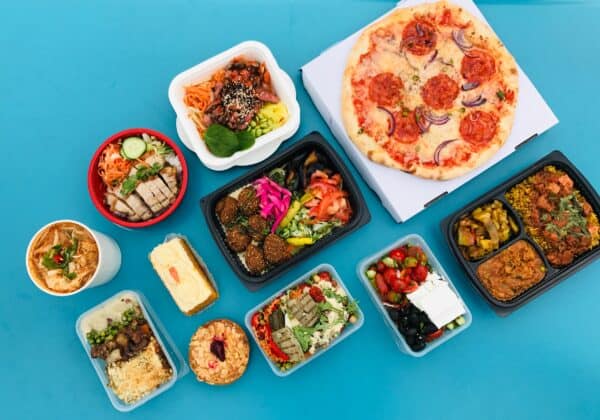
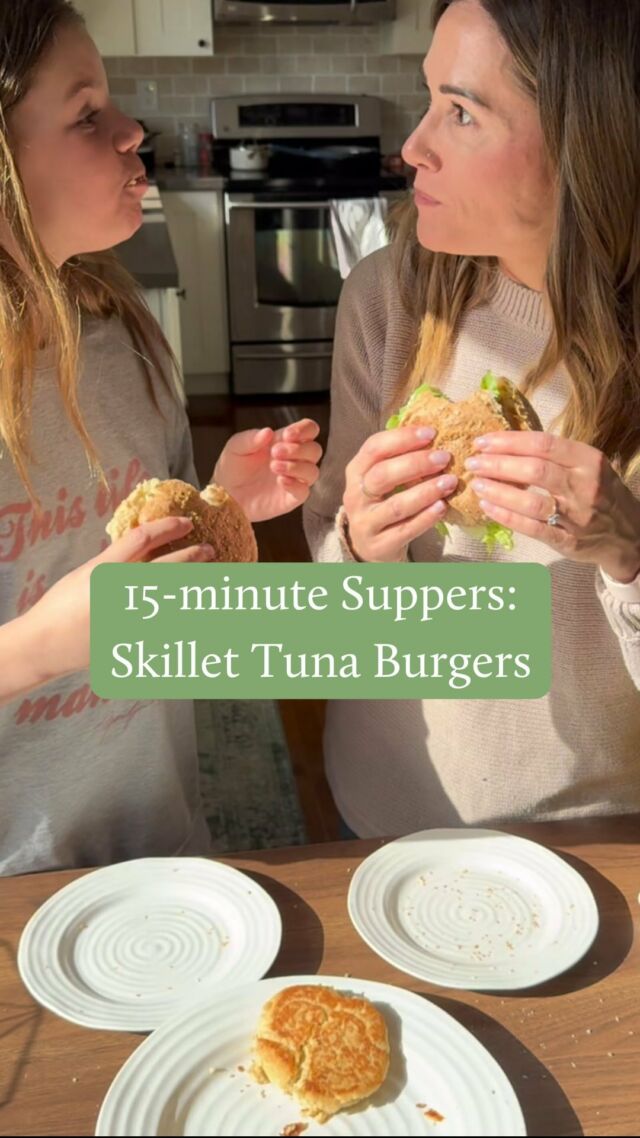
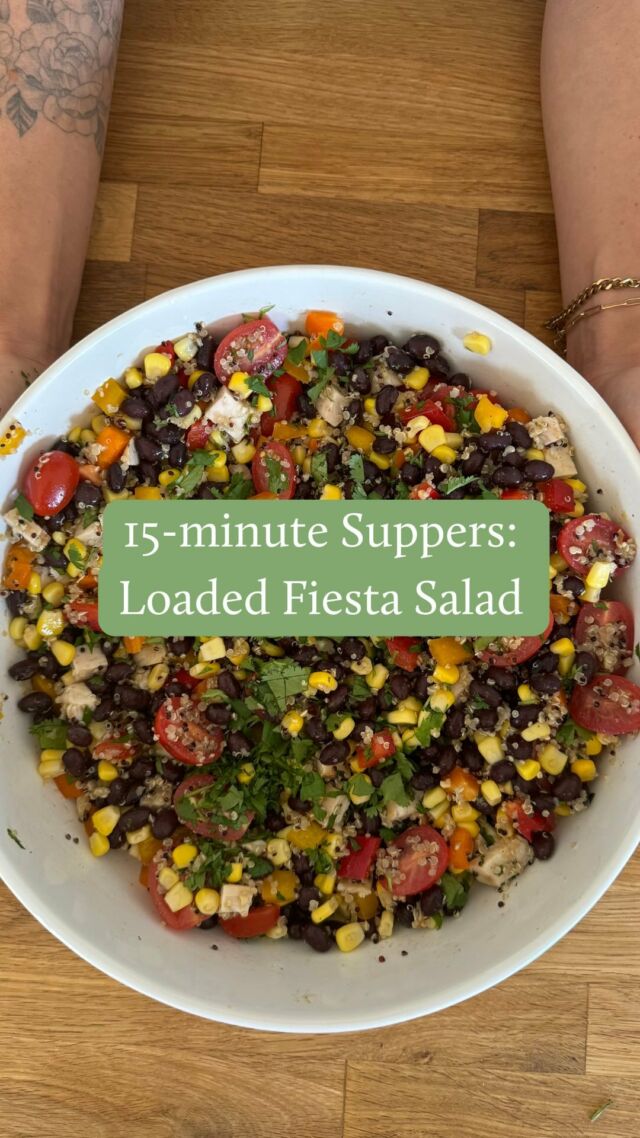

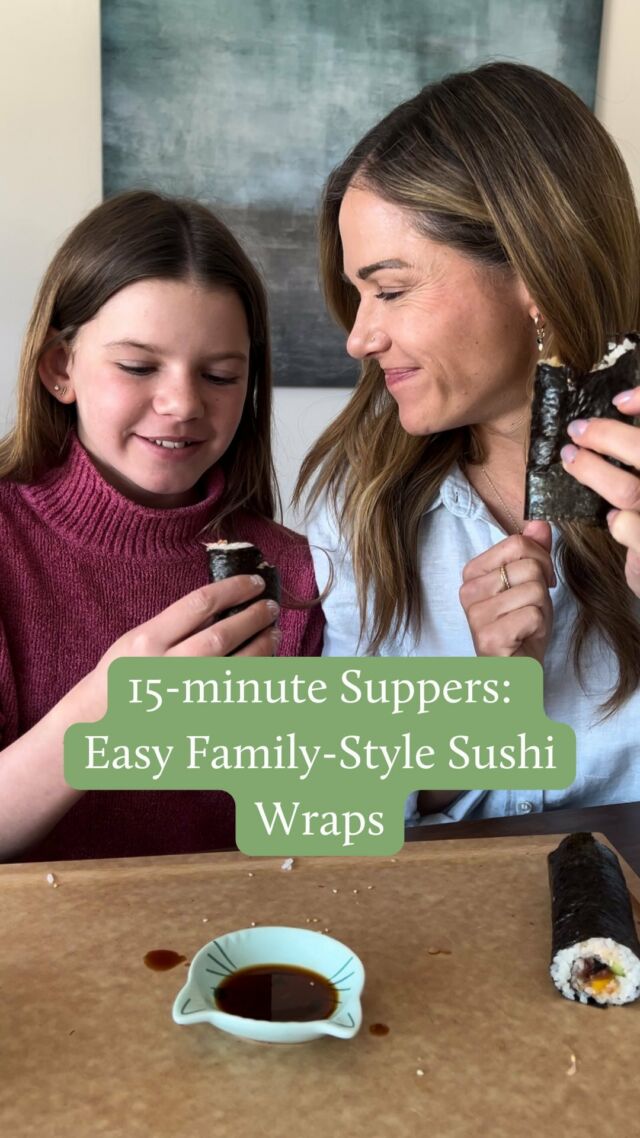

![[AD] It’s Day 6 of my 15-Minute Supper Series and today we’re putting a delicious twist on a classic BLT to make it nourishing and meal-worthy 🤤
Make sure to comment “Spud” and I’ll send you my top dietitian tips for feeding your family on busy weeknights along with a huge list of meal ideas!
This pasta salad takes no time at all to throw together and has everything you need for a nourishing meal. I always make extra bacon for things like this, but if you don’t have any cooked bacon I find cooking it in the airfryer or stovetop the quickest 🥓
I find that this salad lasts 2-3 days in the fridge without getting too soggy. You can also add in fresh lettuce to crisp it up or add the dressing when you eat it.
I ordered all of my groceries from @spuddelivers, which always saves me time and effort and gives me peace of mind knowing that I’m using high-quality, local and sustainable ingredients. I love that they come straight to my door the day after ordering 🙌🏻
Let’s make it!
Ingredients:
* 10 slices bacon cooked and diced
* 12 ounces pasta cooked and cooled
* 1 cup homemade Ranch dressing
* 1 ½ cup baby tomatoes diced
* ½ avocado diced
* feta
* ⅓ cup red onion diced
* 1 cup romaine lettuce
* fresh parsley for garnish optional
Homemade ranch dressing:
* ¾ cup mayonnaise
* ½ cup sour cream or Greek yogurt
* ½ teaspoon dried chives
* ½ teaspoon dried parsley
* ½ teaspoon dried dill weed
* ¼ teaspoon garlic powder
* ¼ teaspoon onion powder
* Salt and pepper to taste
Make it:
1. Blend all Ranch dressing ingredients together in a small blender (or whisk by hand) and set aside.
2. In a large bowl assemble the pasta, tomatoes, avocado, cheese, red onion, lettuce and bacon.
3. Pour the dressing over and toss to combine.
4. Garnish with parsley and serve.
You are going to LOVE this meal-worthy salad, I promise!
Comment SPUD to receive my top dietitian-approved tips for feeding your family during the week, a long list of ideas, and a curated shopping list with all of the ingredients for this recipe + all of the other ideas that I share in this resource!
#sponsored #spuddelivers #15minutemeals #whatsfordinner #easymealideas #dietitianapproved](https://www.sarahremmer.com/wp-content/uploads/sb-instagram-feed-images/438745920_798281295514125_2547899647147267180_nfull.jpg)
Comments
Rose says
nice post
https://www.kidwalkers.com/top-10-best-baby-safety-playard/
Courtney says
I love these realistic tips!!
Sarah Remmer says
Thanks!
Geraldine Dennis says
I appreciate all the tips. Thanks a lot for sharing them. I am gonna follow all of these from now on.
Sarah Remmer says
Thanks! And welcome 🙂